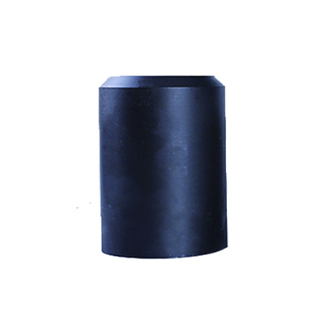- Afrikaans
- Albanian
- Amharic
- Arabic
- Armenian
- Azerbaijani
- Basque
- Belarusian
- Bengali
- Bosnian
- Bulgarian
- Catalan
- Cebuano
- Corsican
- Croatian
- Czech
- Danish
- Dutch
- English
- Esperanto
- Estonian
- Finnish
- French
- Frisian
- Galician
- Georgian
- German
- Greek
- Gujarati
- Haitian Creole
- hausa
- hawaiian
- Hebrew
- Hindi
- Miao
- Hungarian
- Icelandic
- igbo
- Indonesian
- irish
- Italian
- Japanese
- Javanese
- Kannada
- kazakh
- Khmer
- Rwandese
- Korean
- Kurdish
- Kyrgyz
- Lao
- Latin
- Latvian
- Lithuanian
- Luxembourgish
- Macedonian
- Malgashi
- Malay
- Malayalam
- Maltese
- Maori
- Marathi
- Mongolian
- Myanmar
- Nepali
- Norwegian
- Norwegian
- Occitan
- Pashto
- Persian
- Polish
- Portuguese
- Punjabi
- Romanian
- Russian
- Samoan
- Scottish Gaelic
- Serbian
- Sesotho
- Shona
- Sindhi
- Sinhala
- Slovak
- Slovenian
- Somali
- Spanish
- Sundanese
- Swahili
- Swedish
- Tagalog
- Tajik
- Tamil
- Tatar
- Telugu
- Thai
- Turkish
- Turkmen
- Ukrainian
- Urdu
- Uighur
- Uzbek
- Vietnamese
- Welsh
- Bantu
- Yiddish
- Yoruba
- Zulu
Understanding Tubing and Casing in Oil and Gas Well Construction and Operations
Understanding Tubing and Casing in Oil and Gas Operations
In the oil and gas industry, the terms tubing and casing refer to essential components of well construction that play a vital role in the extraction of hydrocarbons. While both are used in the drilling process, they serve distinct functions and are integral to the safe, efficient production of oil and gas.
Casing The Structural Backbone of a Well
Casing is a series of pipes that are installed in the well after drilling to provide structural integrity and prevent the walls of the wellbore from collapsing. It also isolates different underground formations to protect them from contamination and to ensure that the well is safe for operation. The casing process begins after a section of the well has been drilled to a predetermined depth. Workers then insert casing pipes, which are typically made of steel, into the wellbore. These pipes are cemented in place to provide stability and seal off the surrounding formations.
Casing comes in various sizes and grades, depending on the well's design and intended use. For instance, surface casing is the first string of casing set in place, helping to prevent shallow gas formations and protect water aquifers. Production casing, on the other hand, is installed below the surface casing and is designed for the actual extraction of oil or gas. Intermediate casing is often used between these two types to handle specific geological conditions, ensuring the integrity of the well throughout its lifecycle.
Tubing The Delivery System for Hydrocarbons
While casing serves as the well's structural framework, tubing is the pipe through which hydrocarbons are produced. Tubing is inserted into the casing and is typically smaller in diameter than the casing pipes. Its primary function is to transport oil, gas, and water from the production zone to the surface. Tubing allows for the efficient flow of hydrocarbons, enabling operators to manage the production rate and maintain well control.
tubing and casing

Tubing strings are designed to withstand the pressures and corrosive environments typical of oil and gas production. Like casing, tubing comes in various sizes and materials, often coated to protect against corrosion and abrasion. Effective tubing design is crucial for maximizing production efficiency while ensuring the longevity and safety of the well.
The Importance of Proper Installation and Maintenance
The successful extraction of oil and gas depends on the correct installation and maintenance of both casing and tubing. Poor installation can lead to issues such as casing collapse, water intrusion, or gas leaks, which can compromise the safety and economic viability of the operation. Regular monitoring and inspection of both casing and tubing are essential to identify potential problems early and perform necessary repairs.
Technological advances in the oil and gas sector have led to improved methods for casing and tubing installation and monitoring. Innovations such as downhole sensors and advanced cementing techniques enhance the safety and reliability of wells. Additionally, the use of specialized materials and coatings has increased the durability of both casing and tubing against harsh environmental conditions.
Conclusion
In summary, tubing and casing are integral components of well construction in the oil and gas industry. While casing provides the necessary structural support to maintain well integrity, tubing serves as the conduit for hydrocarbon production. Understanding the roles of these elements, along with proper installation and maintenance practices, is essential for successful oil and gas operations. The interplay between tubing and casing not only affects the efficiency of production but also the overall safety and environmental compliance of the industry. As technology continues to evolve, the future of tubing and casing will undoubtedly see advancements that will further enhance performance and sustainability in hydrocarbon extraction.
-
Tubing Pup Joints: Essential Components for Oil and Gas OperationsNewsJul.10,2025
-
Pup Joints: Essential Components for Reliable Drilling OperationsNewsJul.10,2025
-
Pipe Couplings: Connecting Your World EfficientlyNewsJul.10,2025
-
Mastering Oilfield Operations with Quality Tubing and CasingNewsJul.10,2025
-
High-Quality Casing Couplings for Every NeedNewsJul.10,2025
-
Boost Your Drilling Efficiency with Premium Crossover Tools & Seating NipplesNewsJul.10,2025







